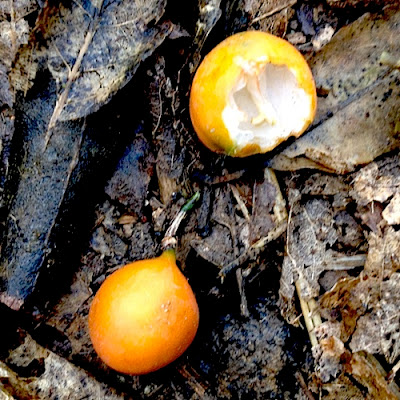Today it rained on
and off all morning, so when the sun came out after lunch we had to get out for
a walk. Rufus was happy inside,
but Lila was out in the garden and decided to follow us. We tried to outrun her, but in the end
decided to give in and let her come with us.
So she tagged
along quite happily for the first 500m or so and then seemed to get a bit
tired. She was very wary the whole
time, probably because she was out of her territory and in a place of new
smells and sounds.
You might feel
it’s wrong to take a cat into the bush, especially so close to Zealandia. First, she’s not a hunter (yes I know
cat owners always say that, like dog owners say their dogs don’t bite). Secondly, she was too busy keeping up
with us and watching her back.
Thirdly, and I know it’s not a valid argument but I’ll make it anyway,
lots of cat-owning households back onto that bush and people walk their dogs
there all the time. I agree with
Gareth Morgan that cats should be enclosed so they can’t hunt birds and
lizards.
It’s autumn
now. The drought is well and truly
behind us and fruits and fungi were the features of this walk.
Favolaschia calocera
Favolaschia calocera is an introduced fungus that lives on dead
wood. It’s become very common
around Wellington. Under the cap are large pores instead of gills.
 |
| Under the cap of Favolaschia calocera are honeycombed pores. |
 |
| Buds of kohekohe, Dysoxylum spectabile. |
Kohekohe (Dysoxylum
spectabile) is going to have a bumper flowering
this year. The sprays of small white
flowers are produced on the tree trunks, and a number were quite low down. When these open, I’ll easily be able to
reach them and get good photos.
Individual trees are either male or female, although some males can set
a few fruits.
Outside the bush,
the track follows the Zealandia pest-proof fence alongside a clay banks with a
nice range of mosses and lichens and a view of the harbour.
We didn’t go far along, because Lila was clearly getting tired by now.
 |
| Passiflora fruits, one eaten by birds |
Native passion
flower (Passiflora tetrandra) was in fruit. Orange rinds littered the ground where
birds had opened the fruits for their meagre pulp and few seeds. I found one intact one.
 |
| Inside the Passiflora fruit are bright red seeds and pulp. |
The fruit has three parts (carpels) and the ovules and (later) seeds are attached in three rows to the outer
walls where they join.
Home at last, Lila staggered in
the door and immediately collapsed on the cool wooden floor. She’ll sleep well tonight.


No comments:
Post a Comment